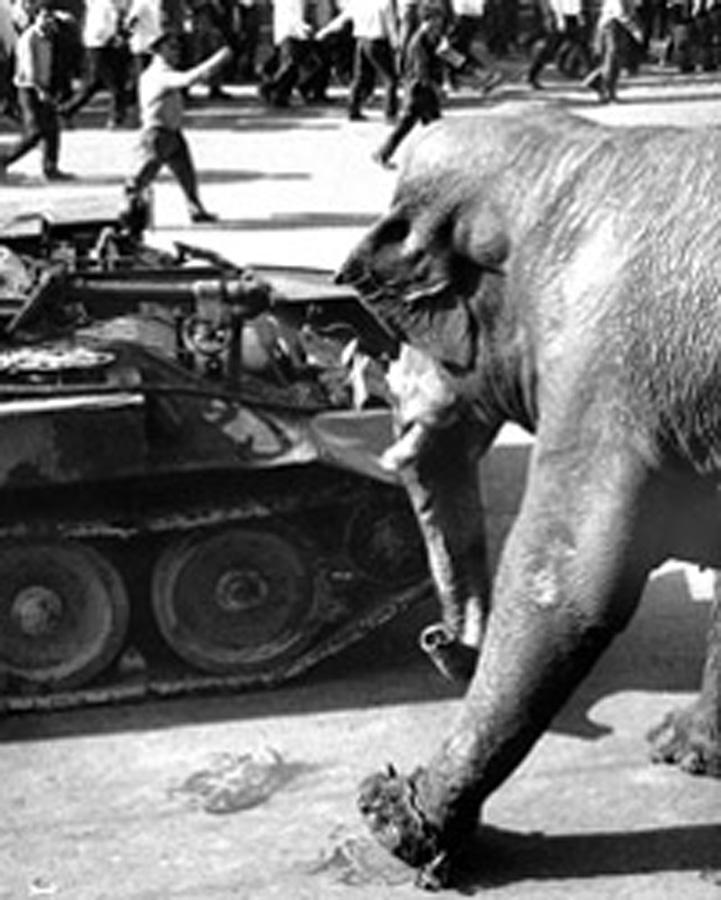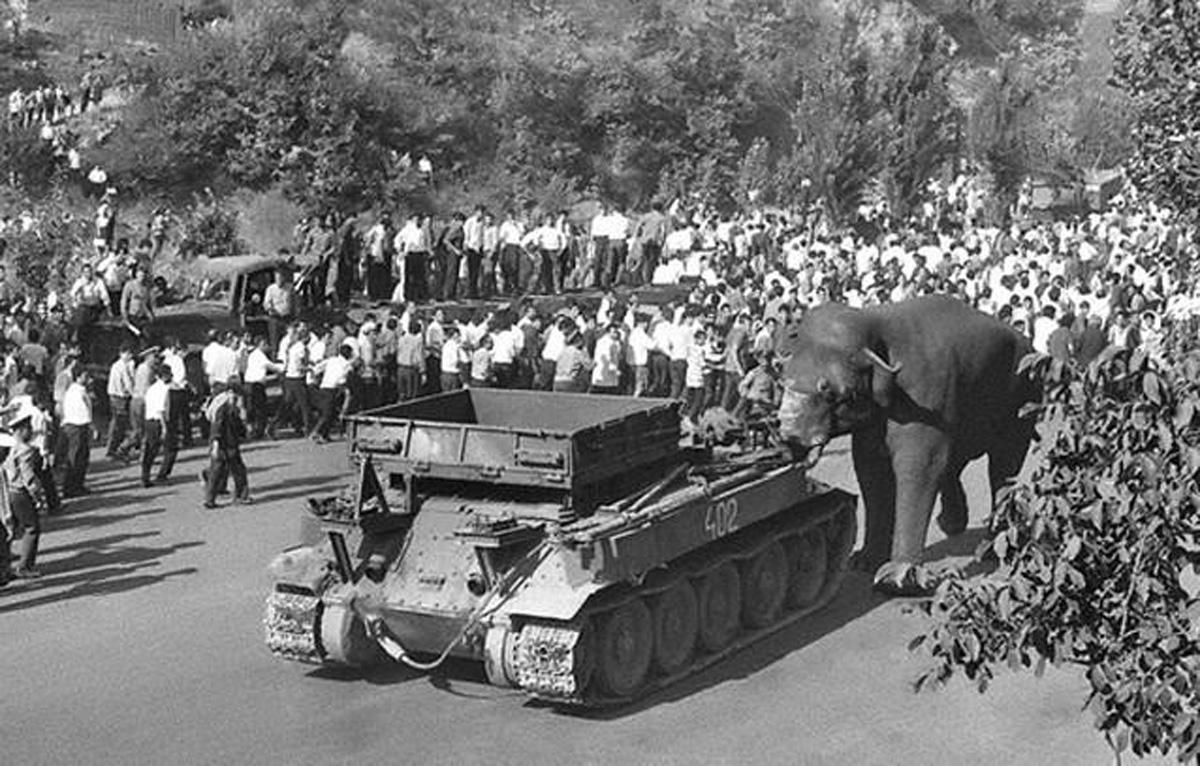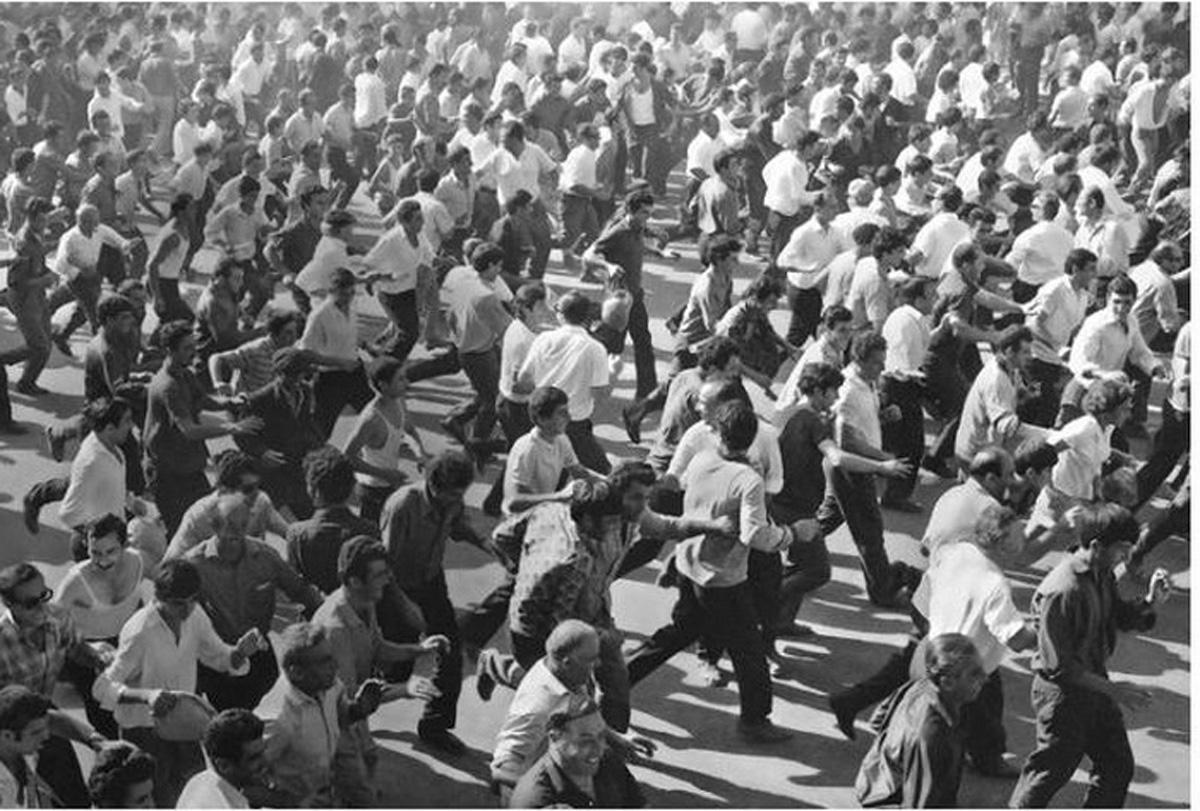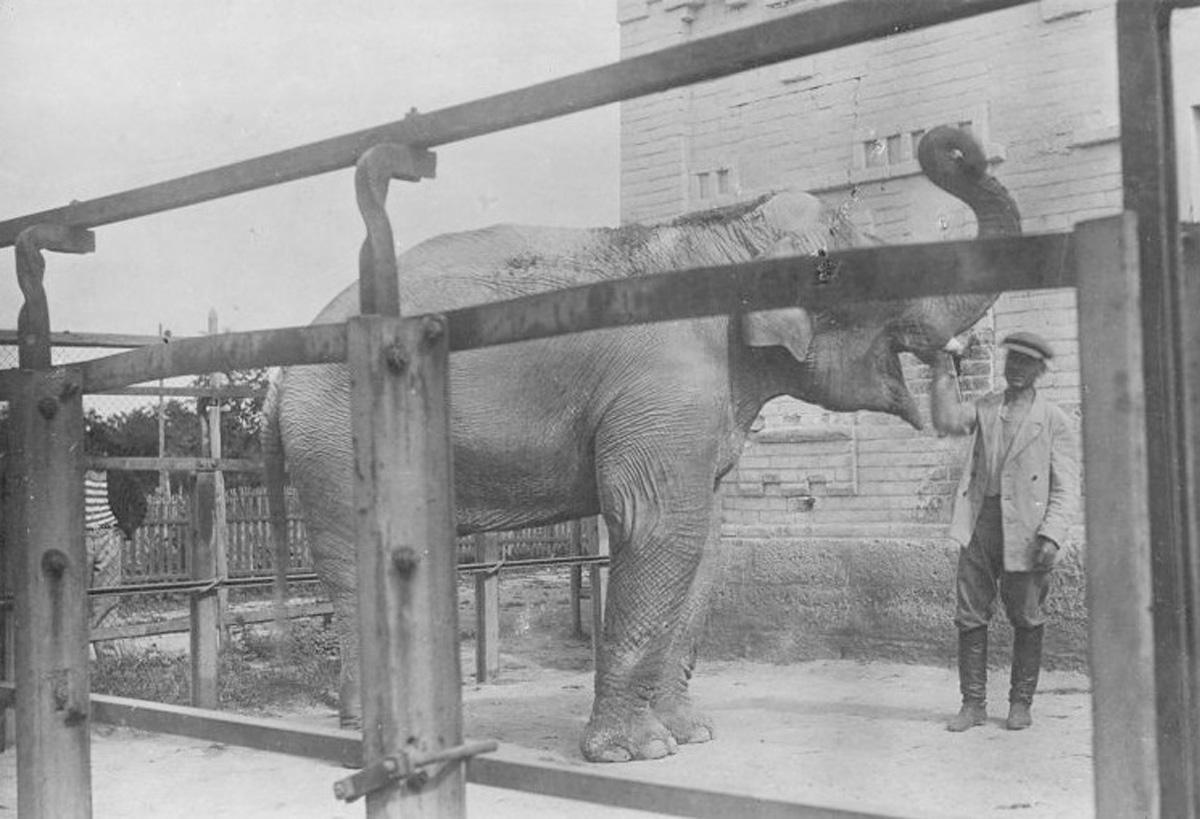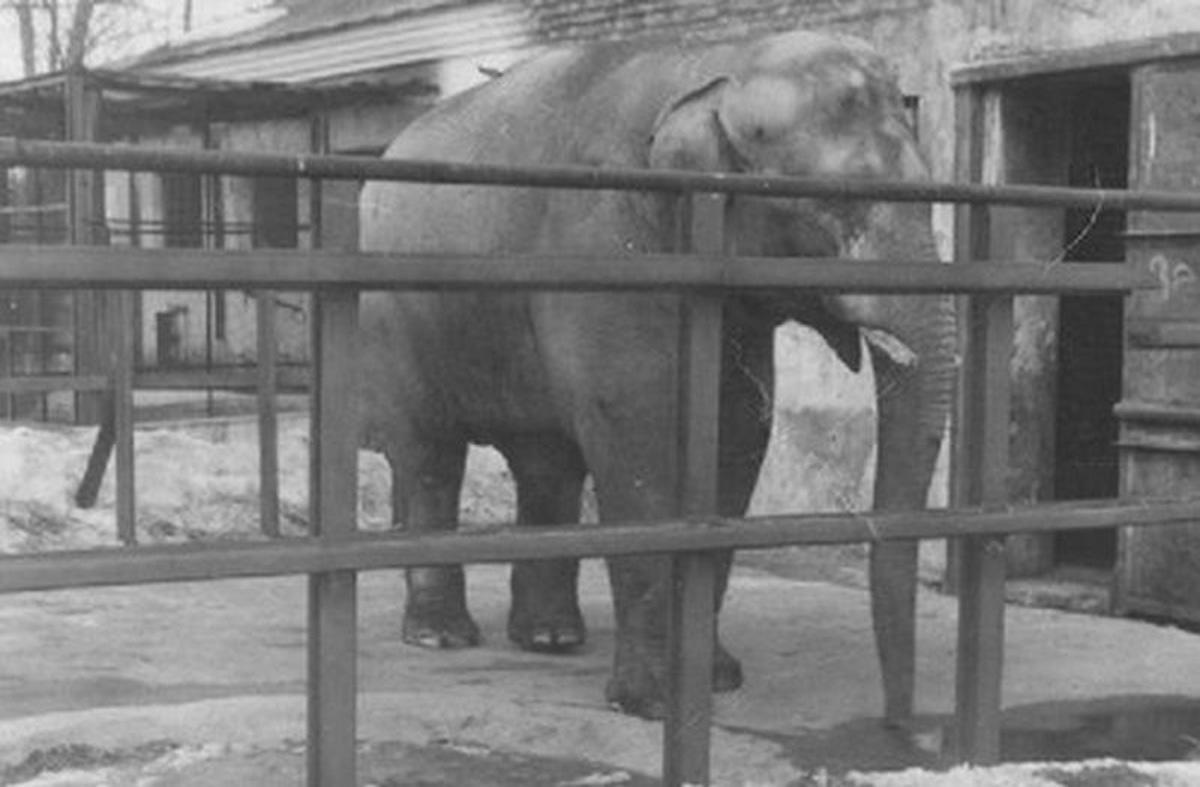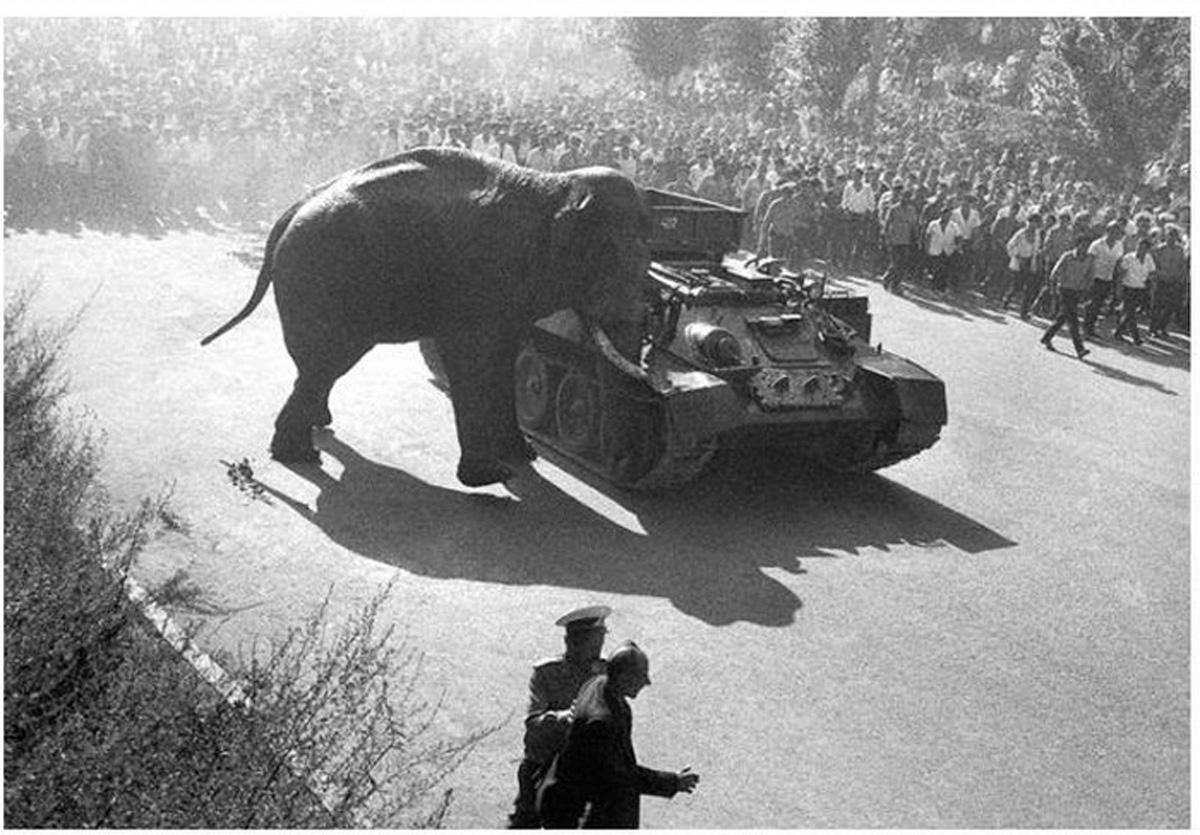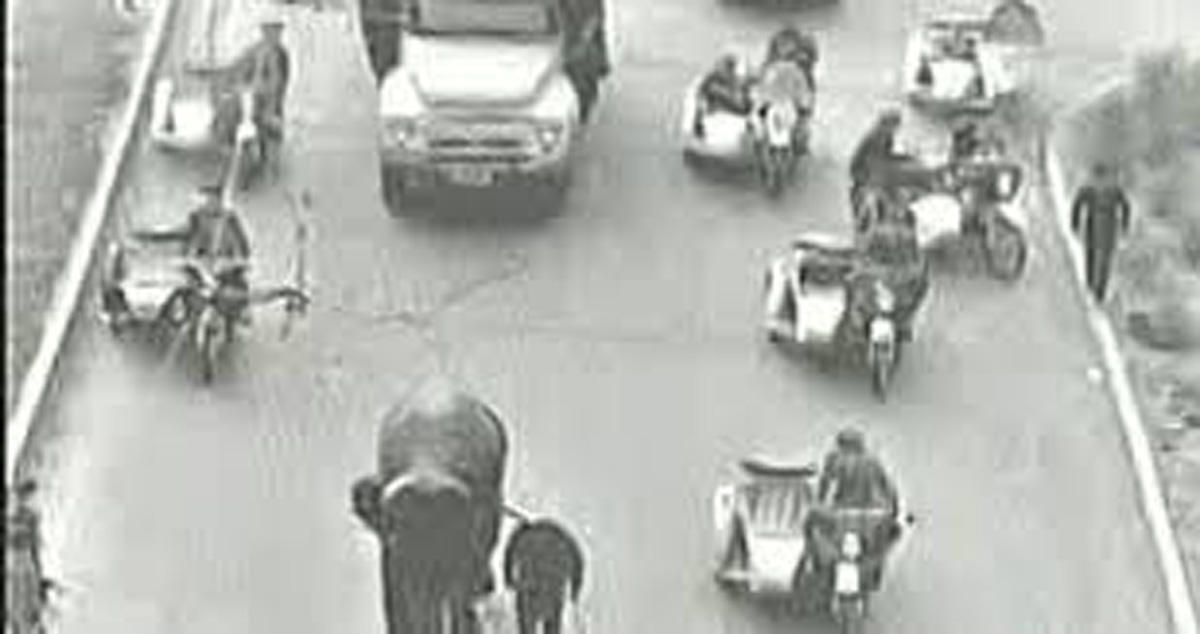Shooting an Elephant … or a Firing Squad for Dumbo [PHOTO]
![Shooting an Elephant … or a Firing Squad for Dumbo [PHOTO]](https://www.azernews.az/media/2017/09/29/eleph1.jpg)
By Alan Hope/ Trend
Whoever is righteous has regard for the life of his beast, but the mercy of the wicked is cruel.
Book of Proverbs 12:10
George Orwell’s 1936 essay “Shooting an Elephant,” describing an experience of the English police officer called upon to kill an aggressive elephant in Burma (Myanmar), though widely regarded as the author’s metaphor for his outrage at the British Colonialism, in its essence is a penitence of the guilty narrator, plagued by his conscience for repeatedly shooting, maiming and finally resulting in a horrific slaughter of a peaceful creature, driven to rebellion by its mistreatment.
Disturbingly similar, yet far more horrifying, is the unique and tragic faith of the Indian elephant called Vova, that was initially shot and then squashed to death by a tank on the orders of the Armenian authority in Yerevan (the capital city of Armenia) on June 28, 1970.
Disney’s true-life Dumbo… and more
Vova’s story began, when just like Disney’s Dumbo, a one-year-old calf was separated from his mother and delivered from India to Stalin’s Soviet Union to be trained as a circus performer. Initially sheltered in Russia Vova was transferred to the zoo in Ukraine that specialized in the organization of circus performances. Unfortunately, his keeper Ivan Sherban’s above the call efforts were in vain, for Vova didn’t possess any extraordinary artistic talent and learned to perform only the most primitive of circus tricks. Nonetheless, the affinity of their interactions had kindred the foundation for a sincere and long-lasting friendship between an animal and man, later on strengthened by the war and its hardships.
The War
Russia’s entrance into the World War II had forced mass evacuations, including the residents of the Ukrainian zoo. As the zoo animals were rushed away to the far-away-from-the-frontline cities of the Soviet Union, Vova, due to the lack of the necessary vehicle to transport this gentle giant, was left behind in Ukraine. Thus began Ivan and Vova’s long journey, as they had literary walked on foot through the war ravished country to the haven in the Southern Caucuses.
The Long Journey
Along the way, these kindred spirits strangely travelling together had faced many hardships of the war, including sleepless cold nights, hunger and deprivations. They had even come under the fire of Hitler’s Air Force at one point, when Vova had protected his friend from the Nazi bullets by covering Ivan with his massive body.
The final destination
Their incredible journey had come to an end several months and thousands miles later, as Ivan and Vova had reached the Armenian capital city in the fall of 1941. Vova was settled in the half-built Yerevan zoo, freely roaming the grounds since the construction of his habitat wasn’t finished. Meanwhile, Ivan was conscripted and sent to the frontline, only to promptly return due to the elephant’s refusal to obey anyone else, reuniting two friends.
Freedom of the war years
Throughout the war years Vova had led a relatively free lifestyle at the Yerevan zoo. Hauling the heavy materials for the builders he had played an essential role in the construction of the zoo. He had acquired a sort of a hobby, finding a pleasure in assisting stalled cars by pushing them up the steep hill by the zoo. Vova had become zoo’s main attraction, entertaining its visitors and giving children rides on his back.
Years of Slavery
Nonetheless, all of the liberties, so much enjoyed by Vova, were stripped away as a consequence of the completion of his habitat, in the construction of which he had, ironically, played a major role. From that point on the Indian giant was locked-up in the small “apartment,” which seriously limited his ability to get the much needed exercise. Along with the motion constrictions, the ever growing elephant was gravely suffering from the malnutrition, driving him mad and desperate.
The hunger
At first Vova had eaten all the surrounding vegetation at the trunk’s length of his entrapment. When all of it was gone the elephant had made his first attempt for a “salad bar nearby,” going a-wall from the zoo by breaking the cage to reach the grass pasture at the hill nearby. On top of the obvious signs shown by the mammal, Vova’s actions should have had prompted an immediate response from the zoo authorities. Instead, the head of the zoo, Tadevos Yeganian, relating the refusal for the ration increase to the budgetary issues, had “graciously” allowed the broken part of the cage “to stay as is,” thus “providing” for Vova’s access to the pasture.
The family to be not
Rather than to tend to Vova’s mounting medical and nutritional needs, zoo authorities, though stated to the contrary, were more concerned with the possible financial gains to be acquired from the elephant’s procreation. Thus, the situation had deteriorated drastically in 1953, as Vova had started to share his “habitat” with the female elephant called Ticky, expropriated from the Germany as wartime reparation. Up until Ticky’s death, some 15 years later, the pair, anguished by the motion suppression and undernourishment, had tried, to no avail, to produce an offspring.
Vova’s final day
Finally, Vova’s ongoing misery had reached its tragic and yet so predictable conclusion, culminating by his refusal to return to the “prison compound” on the sunny morning of June 28, 1970. While the zoo staff was trying to get the runaway elephant back into the enclosure with help of a fire engine, Vova had broken the heavy chain tied to his leg and had started trunk-beating of the surrounding cages and fences, sweeping away any obstacles on his path to the zoo exit.
Once outside of the zoo, Vova had noticed a parked bus with passengers still inside. The good-natured creature had probably thought of the people in distress, just like the ones back in the days when he favored the hobby of towing the stalled cars up the hill by the zoo, thus, urging him to push the bus forward. On the other side, the bus driver, overwhelmed by the occurrence, had pushed the pedal to the floor, taking off from the bus station in a hurry, while Vova’s tusk was broken. Meanwhile, the snowballing crowd of bystanders stood oddly still, mesmerized by the bizarre scene, still not realizing the degree of the terrible pain being suffered by the injured elephant.
By this time, the gray giant, driven by the mayhem caused by the crowd that had continuously stoned him to wave off the already enraged animal’s irrational movements, was heading towards Yerevan’s main railroad bridge.
Already informed Armenian authorities, without any consideration of the alternatives, such as the use of a stun gun, supposedly stated later on as unavailable at the time, or any other countermeasure present in the Soviet arsenal, had dispatched the military personnel, stationed in Yerevan, to the expected intercept point with the direct “shoot-to-kill-at-the-sight” order. Ivan, who had ignored Vova for some time prior to the described events, had arrived at the bridge as well.
Just like the Orwell’s shot-down and maimed elephant, Vova had received several (this time machinegun originated) bullets to the head from a real-life firing squad, and just like his literary counterpart didn’t pass right away.
Instead, the maimed elephant was subjected to further torture at his “last stand at Alamo,” as he faced the refurbished to a mechanized military carrier, remnant of the WWII (either the lend-leased “Sherman” or the Russian-made “T-34”) tank. Needless to say that Vova, taking on the tank, has lost the battle and, as consequence, his life, when the man-lead tank had ruthlessly squashed the poor animal, ending his misery once and for all.
Fraternal friend’s faith
Witness to the grotesque outcome of the events, Ivan, afterwards falling sick for many months ahead, had fainted at the time of Vova’s death. The tragedy had a follow-up, as not too long after his friend, Ivan had shared Vova’s faith, as he was crushed to death by his Vova’s replacement at the zoo several years later.
Fact turned urban legend
In spite of the fact that many of the Yerevan city residents had bared a witness to the Vova's actual demise, the Armenian press of the time, reporting on the incident the following day, had claimed that "the runaway elephant was safely returned to zoo.”
In the truth-absent environment of then Soviet Armenia, the story had turned into an urban legend, growing in details of its story-tellers as time went on. Those details had even went as far as to include the claims of Vova’s corps being stripped down for barbeque meat for the Armenian elite, bearing yet another similarity to the Orwell’s essay.
The unfortunate Result
Notwithstanding, the above mentioned events serve as a proof of the fact that the Armenian authorities, starting from the Soviet times, had unjustifiably sanctioned the commitment of a cruel act of final violence against the poor animal enraged by the human mistreatment.
---
Follow us on Twitter @AzerNewsAz
Here we are to serve you with news right now. It does not cost much, but worth your attention.
Choose to support open, independent, quality journalism and subscribe on a monthly basis.
By subscribing to our online newspaper, you can have full digital access to all news, analysis, and much more.
You can also follow AzerNEWS on Twitter @AzerNewsAz or Facebook @AzerNewsNewspaper
Thank you!

